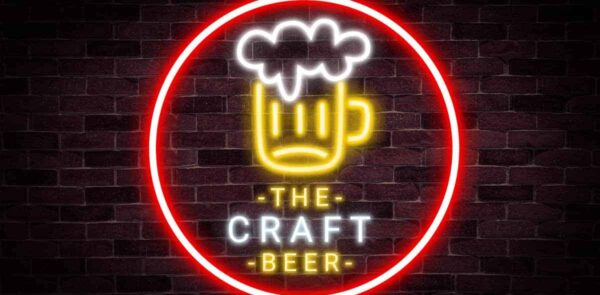
Jump to a section:
In the world of catering, relationships matter. Whether you’re preparing dishes for a festive wedding, a high-stakes corporate event, or a small family gathering, your reputation is built on the promises you make—and more importantly, the promises you keep. It’s one thing to attract new clients with a fancy menu or a trending food display. But the real measure of success often lies in how many of those clients come back for more.
Customer retention is the silent hero of any thriving catering service. Bringing in new clients is essential, but retaining existing ones can be far more profitable and sustainable in the long run. Returning clients tend to order more, refer you to friends and business associates, and leave positive reviews that help you stand out in a crowded market. Plus, it often costs less to maintain a happy customer than to win over a brand-new one.
However, in a competitive industry where tastes, dietary needs, and event trends shift constantly, how do you keep your clients coming back? In this playbook, we’ll explore customer retention strategies specifically designed for catering services.
Why Customer Retention Matters for Catering Companies
Before we dig into the nuts and bolts of each strategy, let’s talk about why investing time and resources into retention is crucial.
- Repeat Business = Steady Revenue
According to a study by Bain & Company, a mere 5% increase in customer retention can boost profits by as much as 25% to 95%. For caterers, a loyal client can lead to multiple events each year—holiday parties, corporate luncheons, anniversaries, and more. - Lower Marketing Costs
Acquiring a new customer can cost up to 5 times more than retaining an existing one (Harvard Business Review). When satisfied clients stick around, you spend less money on ads, promotions, and other outreach methods. - Positive Word-of-Mouth
Happy, long-term customers share their experiences with friends, family, and colleagues. In an industry built on reputation, personal referrals often carry more weight than any online ad or social media campaign. - Stronger Brand Reputation
Catering is highly personal—often tied to life milestones or important business events. When you consistently deliver quality, you become a trusted partner in these significant moments. This not only secures repeat business but also elevates your brand image.
Now that we’ve established the “why,” let’s move on to the “how.” In the following sections, we’ll outline key strategies to keep your customers coming back for seconds (and thirds!).
1. Personalized Service: Know Your Clients Inside and Out
In catering, it’s not just about the food—it’s about the experience. Personalizing your interactions and offerings can make customers feel seen, heard, and valued. This goes beyond just remembering their names. It’s about capturing and using details that make each event or order unique.
Challenges
- Gathering and storing personal client data can be tricky, especially if you manage hundreds of customers.
- Striking the right balance between personalization and privacy requires sensitivity.
Strategies for Personalization
- Create Detailed Client Profiles: Keep records of dietary preferences, favorite cuisines, past event themes, budget ranges, and any special notes. A robust customer relationship management (CRM) system can make this easier.
- Ask the Right Questions: During initial consultations, gently inquire about the client’s personal tastes, their event’s purpose, or any unique traditions. This sets the tone for a customized menu or presentation.
- Use That Data: Don’t collect information just to file it away. If you know a client loves vegan desserts, suggest a new vegan chocolate mousse you’re trialing. If you remember their favorite color scheme, incorporate it into the plating or event décor.
- Follow Up After Events: Send a brief message or call post-event to ask how they enjoyed everything. Mention specific details you know are important to them. This small step reinforces that you truly listened.
People remember how you made them feel. Personal touches signal that you genuinely care, which fosters loyalty. When clients sense you understand their needs, they’ll be less likely to shop around for alternatives.
2. Loyalty Programs: Rewarding Repeat Customers
Loyalty programs aren’t just for coffee shops or airlines. They can be a powerful tool in the catering world too. Whether you serve corporate lunches every Wednesday or handle monthly nonprofit fundraisers, offering incentives for repeat business can solidify relationships and make your service more “sticky.”
Challenges
- Determining the right structure for your loyalty program may be confusing—should it be a points-based system, a referral bonus, or something else?
- Many caterers worry about managing the tracking and logistics of such a program.
Approaches to Building Loyalty Programs
- Points or Credits System: For every dollar spent, clients earn points that can be redeemed for discounts, free dish upgrades, or future services. This encourages them to consistently choose you over competitors.
- Referral Rewards: Existing customers get a discount or a complimentary service when they refer a friend or colleague who books with you. This amplifies word-of-mouth marketing.
- Exclusive Previews: Invite loyal customers to exclusive tastings or menu sneak peeks, giving them the first look at new dishes or seasonal offerings.
- Tiered Membership: Consider a “Gold,” “Silver,” and “Bronze” tier system where more frequent customers receive progressively bigger perks, like free dessert stations, better payment terms, or priority booking during peak seasons.
Loyalty programs create a sense of belonging and appreciation. Customers feel special knowing that every booking brings them closer to a reward or perk. It’s a tangible thank-you that goes beyond the usual “we appreciate your business” email.
3. Consistent, High-Quality Performance
Reputation in catering hinges on consistency. One stellar event can quickly be overshadowed if the next one is disappointing. Maintaining top-tier taste, presentation, and service each time is the cornerstone of retention.
Challenges
- Scaling your team or menu can cause quality inconsistencies.
- Seasonal menu changes and supply chain issues might lead to fluctuations in the availability of key ingredients.
Ensuring Consistency
- Standardized Recipes and Procedures: Use detailed recipe cards and process checklists. This helps new team members quickly learn standards and ensures every dish tastes the same every time.
- Supplier Relationships: Develop strong, long-term partnerships with trustworthy suppliers to reduce the risk of ingredient shortages or quality dips.
- Regular Staff Training: Host monthly training sessions on food handling, customer interaction, and plating aesthetics. Empower your team to uphold your brand’s quality.
- Collect Real-Time Feedback: Use quick comment cards or a digital feedback form right after events. This allows you to address any issues immediately and prevent them from recurring.
Clients want peace of mind. When they reorder from you, they expect the same or improved level of excellence. Being consistent instills confidence, and confidence leads to loyalty.
4. Prompt and Transparent Communication
Catering involves multiple moving parts: menu confirmations, headcounts, table arrangements, dietary restrictions, and more. Timely, clear communication is vital for a smooth experience from start to finish. This clarity not only prevents mistakes but also reassures clients that you’re in control.
Challenges
- Handling numerous clients simultaneously can lead to overlooked messages or delayed replies.
- Last-minute event changes—from a sudden venue switch to unexpected guest dietary needs—require agile coordination.
Best Practices for Effective Communication
- Designated Contact Person: Assign a single point of contact within your company for each client. That person should handle all inquiries, updates, and changes.
- Use Communication Tools: Platforms like Slack, Trello, or specialized catering management software help track tasks and messages. For smaller teams, even a shared Google Sheet or well-organized email labeling system can work.
- Set Response Time Standards: Aim to respond to client emails or calls within 24 hours—faster if possible. Even if you don’t have a complete answer, let them know you’re working on it.
- Be Proactive: If you see a potential issue—like a supplier delay—alert the client immediately. Propose solutions or alternatives rather than leaving them in the dark.
It’s simple: Good communication reduces stress. If customers trust that you’ll keep them in the loop and handle any hiccups, they’re more likely to stick around long-term.
5. Seasonal and Themed Menu Rotations
Repetitiveness can cause clients to look elsewhere for variety. Keeping your menu fresh with seasonal produce or trendy flavors can pique interest and encourage clients to keep trying new things from you.
Challenges
- Seasonal ingredients can fluctuate in price and availability.
- Adapting new dishes might require additional training for your culinary team.
Implementing Seasonal Changes
- Highlight Local Produce: Work with local farms or markets to incorporate fresh, in-season ingredients. It gives your menu a story, and many clients appreciate the farm-to-table vibe.
- Rotating Signature Dishes: Keep a few classics (like your best-selling entree or dessert) year-round, but rotate your “specials” monthly or quarterly.
- Holiday or Event-Themed Menus: Offer special menus for major holidays (Thanksgiving, Christmas, Diwali, Lunar New Year) or popular local events. This appeals to clients hosting themed gatherings.
- Promote New Menu Launches: Treat a menu update like an event. Host small tastings for loyal customers or post mouthwatering pictures on social media. Show the excitement behind every seasonal shift.
Change keeps things interesting. Regular updates to your offerings give existing clients a reason to come back—there’s always something new to taste.
6. Going Above and Beyond: Surprise & Delight
Sometimes, the little extras can create lasting memories. Whether it’s a handwritten thank-you note after an event or a complimentary side dish that wasn’t expected, these small surprises can go a long way in fostering loyalty.
Challenges
- Extra items or personalized gestures require additional cost or time.
- It’s important to ensure these surprises match the client’s preferences—no use giving a box of chocolates to someone who hates sweets.
Ideas to Surprise & Delight
- Personalized Thank-You Cards: After the event, mail or email a heartfelt note. Mention a specific detail about their event to show it’s not a generic message.
- Free Upgrades: If you see that your client loves a certain dish, occasionally throw in a small upgrade at no extra charge (like an extra side or a premium garnish).
- Special Occasion Discounts: On a client’s birthday or the anniversary of your first event together, offer a small discount or a free dessert.
- Behind-the-Scenes Photos: If you have a professional photographer or even a staff member with a knack for photography, capture the event setup and send some candid shots to the client afterward. It’s a personal touch they might cherish.
Generosity breeds goodwill. When clients see you’re willing to invest in their happiness (beyond the contracted work), they’ll feel more inclined to stick with you for future events.
7. Building Strong Community Presence
Catering services thrive on local networks. Being a recognized name in your community or professional circles can lead to consistent repeat business. Clients who see you active in local events and charities often perceive you as trustworthy and generous.
Challenges
- Community events can eat up time and resources without a guaranteed return on investment.
- Striking the right balance between community involvement and operational demands can be difficult.
Ways to Engage Locally
- Sponsor Local Events: Offer partial or full sponsorship for nonprofits or small community gatherings. This can lead to positive press and new connections.
- Participate in Food Festivals: Set up a booth at local fairs or food festivals to showcase your dishes. It’s an excellent way to let potential clients taste your cuisine.
- Host Charity Nights: Pick a cause you care about and dedicate a portion of your sales or event booking fees to that cause. Announce it on social media and local press releases.
- Network with Other Vendors: Build relationships with local florists, event planners, and venue managers. Cross-refer clients and co-market your services.
People like to do business with local brands that have visible roots in their community. When you’re seen as more than just a service provider—perhaps a champion for local causes—you cultivate deeper loyalty.
8. Gathering and Leveraging Feedback
Feedback is a goldmine for improvement—and a strong tool for retention. By regularly asking clients what they loved (or didn’t) and then acting on that information, you show a commitment to excellence. This fosters trust and signals that you truly value their input.
Challenges
- Encouraging honest feedback can be hard if clients feel awkward sharing criticisms.
- Too many feedback requests can feel pushy, but too few means you miss important insights.
Effective Feedback Methods
- Post-Event Surveys: Send a short, focused survey via email right after the event. Keep it to five questions or fewer to increase response rates.
- Personal Follow-Up Calls: For big events (like weddings), a quick phone call can be more meaningful than a generic email.
- Social Media Polls: If you have an engaged online following, run polls about new menu items or service ideas. This can feel casual and fun.
- Incentivize Feedback: Offer a small discount or a chance to win a gift card to those who complete your survey. This boosts participation.
When clients see you’ve made changes based on their suggestions—like adjusting portion sizes or refining a popular dish—they recognize you’re dedicated to continually improving their experience. That sense of being heard and valued keeps them loyal.
9. Streamlined Booking and Payment Processes
In a world where people can hail a ride or order groceries with a tap on their phone, convenience is king. A cumbersome or confusing booking experience can turn potential repeat customers into one-timers. Making it simple to hire you again is a major part of a strong retention strategy.
Challenges
- Investing in user-friendly online platforms or payment gateways may require upfront costs.
- Some clients still prefer traditional methods (like checks or phone calls) over digital options.
Simplicity Strategies
- Online Booking Platform: Offer a clear, step-by-step form on your website to let clients input event details, choose a menu, and receive an initial quote.
- Multiple Payment Options: Accept credit cards, PayPal, bank transfers, or even cash/check for those who prefer it. Flexibility shows you’re easy to work with.
- Transparent Pricing: Clearly list what’s included in each package or service tier. Hidden fees or unclear costs can sour the experience and reduce repeat bookings.
- Automated Reminders and Confirmations: Send automatic email or text updates to confirm bookings, remind clients of payment due dates, or finalize menus. Less back-and-forth means less stress for both parties.
Frustration over logistical hassles can overshadow an otherwise great catering experience. By streamlining these touchpoints, you make it effortless for clients to come back for more.
10. Tracking and Measuring Retention Success
You can’t improve what you don’t measure. Keeping tabs on key metrics helps you identify what’s working (and what’s not) in your retention efforts. By analyzing data, you can fine-tune your strategies and allocate resources effectively.
Challenges
- Setting up a robust tracking system may require learning new software or adjusting existing workflows.
- Some business owners focus heavily on new customer acquisition metrics and ignore retention numbers.
Key Retention Metrics
- Repeat Purchase Rate: Of all your clients, what percentage has used your services more than once?
- Referral Rate: How many new clients mention they heard about you from existing customers? This is a strong indicator of satisfaction and loyalty.
- Churn Rate: How many clients never return after their first event? Analyze why they left—was it price, menu variety, or service issues?
- Average Spend of Repeat Clients: Are repeat customers spending more over time as they trust your capabilities? This ties directly into profitability.
Data-driven decisions lead to more effective strategies. By regularly reviewing these metrics, you can quickly spot areas needing improvement—maybe your communication is top-notch, but your menu variety lags. Armed with this information, you can keep growing in the right direction.
Conclusion
In a fast-paced, competitive industry like catering, customer retention often separates the businesses that flourish from those that merely survive. You might have mouthwatering dishes and dazzling presentations, but if you’re not connecting with clients on a deeper level—and giving them ample reasons to return—your growth will stall.
Retaining customers is about more than just fulfilling an order; it’s about building long-term relationships rooted in trust, value, and consistency. Whether you’re personalizing your offerings, implementing a loyalty program, or simply ensuring every dish meets your high standards, these strategies show clients that you genuinely care about their experiences.


